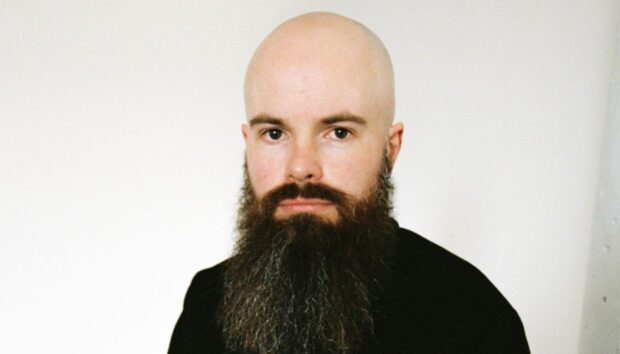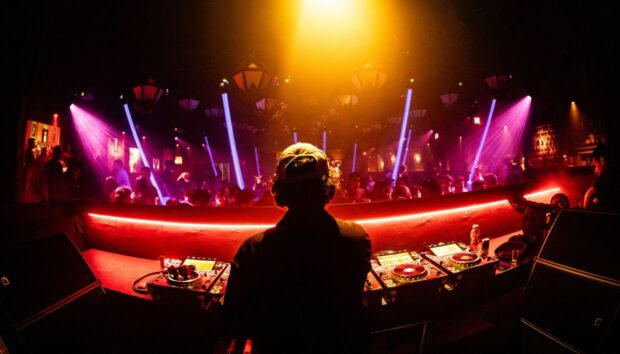
Raised in Perth, Australia, based in Los Angeles, producer and DJ Maaike “Kito” Lebbing first burst onto the scene in 2009 with a deep dubstep record called “What If” on Skream’s Disfigured Dubz label. She quickly went on to apply her skill at making big bad bass and sweetly melancholy melodies to pop music – first as part of the duo Kito & Reija Lee on Diplo’s Mad Decent label and later on in collabs with Hudson Mohawke, Feadz, Zebra Katz, and Trinidad James. In the past couple years, Kito has put a major stamp on avant-pop music, producing for and songwriting with a bevvy of strong female vocalists including Mabel, Jorja Smith, Banks and Icona Pop.
For a recent edition of Real Talk, Vivian Host called up Kito to talk about the production of Fletcher’s sultry banger “Bitter,” a slow-burning hit that many will recognize from it’s prominent use in the TV series The L Word: Generation Q. We had a look around Kito’s stripped-back bedroom studio – some of Fletcher’s vocals were recorded there and remotely via iPhone mic – and she gave us five tips for songwriting and creating dynamics in the mix.

Start simple, then build
We started this song over a guitar loop, created with Electric Sunburst from Native Insruments’ Komplete. I figured out the chords with piano first – this is what I often do – and then dragged them into a new instrument. Then I added a very simple drum loop – pretty similar to what’s there, just not as detailed – and just one bass initially that followed the chords. Once you’ve got the vocal, it’s really about making sure that there’s movement and dynamics and excitement. Sometimes you’ll be in the process of finishing a song and there’ll be one section that feels like it’s missing something elevating that part of the song – and that thing can be just one sustained note on a synth, just a high sort of string or something, that gives it tension. Producing is literally like, filling out the space of a song and building on all the sounds.
Choose character over perfection
In my studio I use a Mojave 200 microphone and it picks up a lot. I don’t have a booth at my place because I just like recording in the room. I like being with the artist and hearing the takes in the room. I definitely focus more on just getting great takes with character. When I when I do a vocal comp, I’m definitely looking for that character over perfect pitch or something because you can fix all of that. It’s definitely about hearing the sincerity in a take or a bit of vulnerability if it’s like a verse that’s sung softly… All of those things matter for the final song.
Use automation and reverb to make it big
I definitely automate filters, especially at certain frequencies. I like automating reverb a lot so it starts dry and gets big. And then I would bounce it in place and cut the volume on the reverb at the end so there’s no tail when it goes into the next section. I find those little things really satisfying, like stops in tracks, cutting reverb. Disclosure are really good at that in all their pre-choruses and into the hook, swelling and then it’s kind of dry when the drums come in. I also have a section which is just processed vocals from Fletcher’s ad libs. I’ll pitch them up and add reverb so it just sort of fills out the track – it’s like extra little hooky things, like candy over the top.
Trigger sidechains with a muted kick track
I just make sure that it’s always ducking whenever the kick or the snare hits. I often create a track that I’ll use as my “sidechain track” which I’ll layer over the top of the kick in the snare. It’s just like a click sound with a really hard attack that is doing the same pattern as the kick and snare, and I’ll buss it to Channel 8 (which is always my sidechain bus) and then I send it to “No output” so it doesn’t even go to the master – you don’t hear it, it’s just there as a trigger. I do that with everything: the vocals, the synths, the guitars. Then I can choose how much I want it to duck for different things. That is so useful to me being able to hear how much it’s actually ducking – if you just sidechain it to the real snare or the kick, you only really hear the effect when snare or kick hits. For instance, on the chorus, I like it to duck quite a lot because I don’t really want anything else playing when the kick hits.
Use aggressive compressors, but gently
If I want to use sidechaining as more of an effect, I often use Nicky Romero’s Kickstart compressor. I love sidechaining vocals to give them movement – not lead vocals but just all the little effected vocals that I’ve got going on in the background. This [free plug-in] OTT by Xfer Records is also pretty useful for little details. It’s a favorite with people trying to make impressive dubstep bass; I heard some producers would have like five instances of OTT on their bass sound! It’s quite aggressive compression but if you use just a little bit it can add color, and kind of gels everything together on a drums buss as well. I’m kind of using it as an exciter. I also like to add a bit of distortion on all of the drums – something like CamelPhat or even Bitcrusher – but just the smallest amount. It just sort of gels it all together. I heard Max Martin uses that on his whole master! But who knows.
Watch the entire Real Talk episode with Kito here. You can see all the other episodes in the series here.
Real Talk, hosted by Vivian Host (@stareyezzz) is every Thursday at 1PM Pacific / 4PM Eastern / 9PM GMT on @nativeinstruments Instagram Live.















